In this guide, we’ll explore a selection of small plants perfect for rock gardens, exploring their characteristics, care, and why they make excellent choices for such unique environments.
Lavender
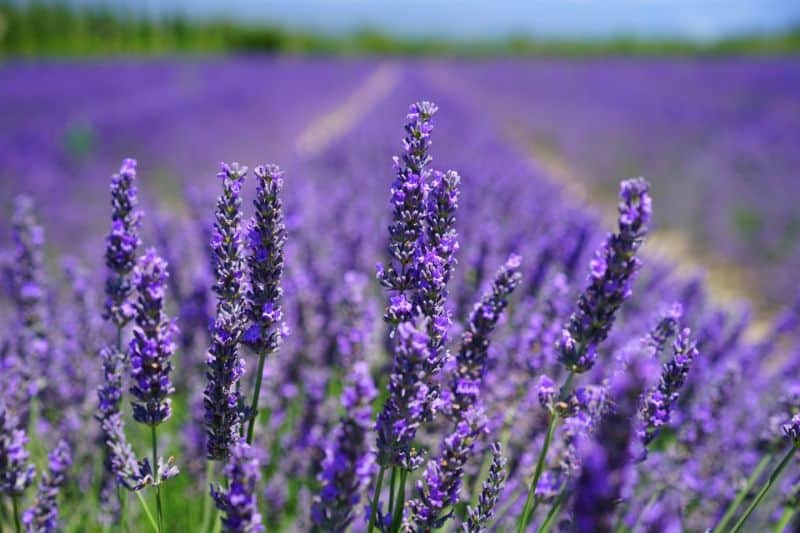
Lavender is a classic choice for rock gardens due to its fragrant flowers and silvery-green foliage. This hardy perennial thrives in well-drained soil and full sun, making it ideal for rocky landscapes where drainage might be an issue for other plants. With its compact size and bushy growth habit, lavender can add a touch of Mediterranean charm to your garden. Its purple spikes attract bees and butterflies, enhancing biodiversity in your outdoor space. Beyond its beauty, you can also harvest the flowers for use in homemade sachets or culinary dishes, making it both functional and decorative.
To ensure your lavender flourishes, consider planting it in clusters. This will not only provide a stunning visual impact but also help in creating a microclimate that retains warmth, beneficial for this sun-loving plant. Regular pruning after blooming will encourage new growth and maintain a neat shape.
Creeping Thyme
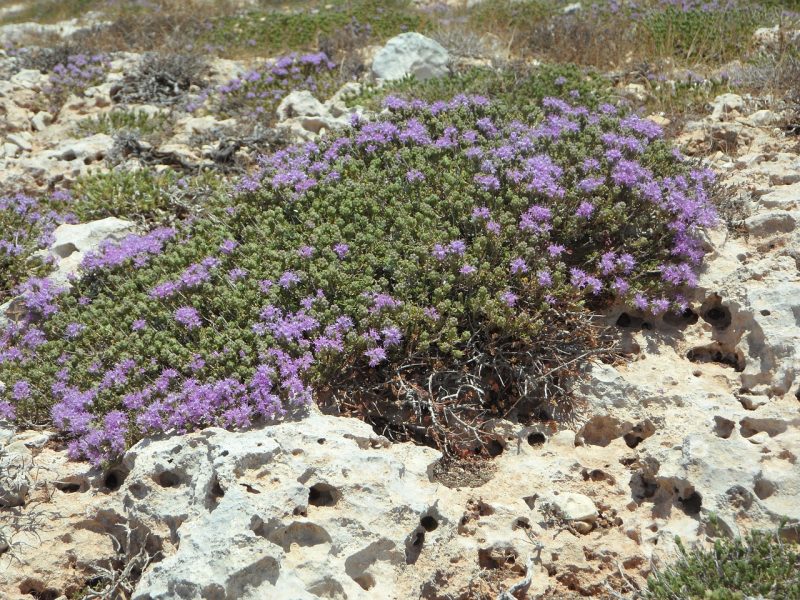
Creeping thyme is a versatile and resilient plant that excels in rock gardens. Known for its low-growing habit, this perennial produces a lush carpet of tiny flowers, usually in shades of pink or purple, during the summer. Its fragrant foliage pleases the senses and deters pesky weeds, making it an excellent ground cover.
This hardy little plant thrives in poor, sandy soil and requires minimal watering once established. As a drought-tolerant plant, creeping thyme is especially suitable for regions with hot summers, as it can withstand dry conditions while still providing a burst of color. When planted between rocks, it creates a natural, cohesive look that enhances the rugged charm of your garden.
Pansy
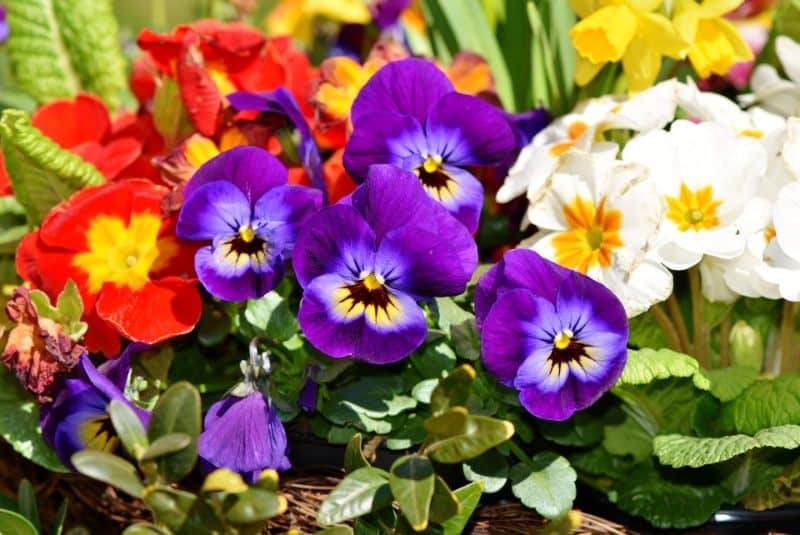
Pansies, with their charming faces and vibrant colors, are a delightful addition to any rock garden. These annual flowers are available in a spectrum of hues, from deep purples to bright yellows, making them versatile companions to other plants. While they might be a bit taller than some other rock garden staples, when planted at the front of your rocky landscape, they can create a lively border that draws the eye.
Though pansies prefer cooler climates, they can provide long-lasting blooms in the early spring and fall. Regular deadheading will encourage continuous flowering, and their relatively small size makes them perfect for adding splashes of color without overpowering the surrounding landscape. Just be mindful of their light requirements; they thrive best in partial shade to full sun.
Snowdrop

One of the first flowers to bloom in spring, snowdrops are a delightful sight emerging from the thawing ground and rocky crevices. These perennial bulbs showcase delicate white flowers that resemble teardrops, creating a soft elegance that contrasts beautifully against rugged rocks. Snowdrops are well-suited for shaded areas, making them perfect for rock gardens that may not receive full sun.
Planting snowdrops in clusters will amplify their visual impact, and they are happiest in well-drained, moist soil. After flowering, allow the foliage to die back naturally to help nourish the bulbs for next season’s bloom. Snowdrops not only bring early color but also signify the arrival of spring, evoking joy in gardeners and passersby alike.
Aubrieta
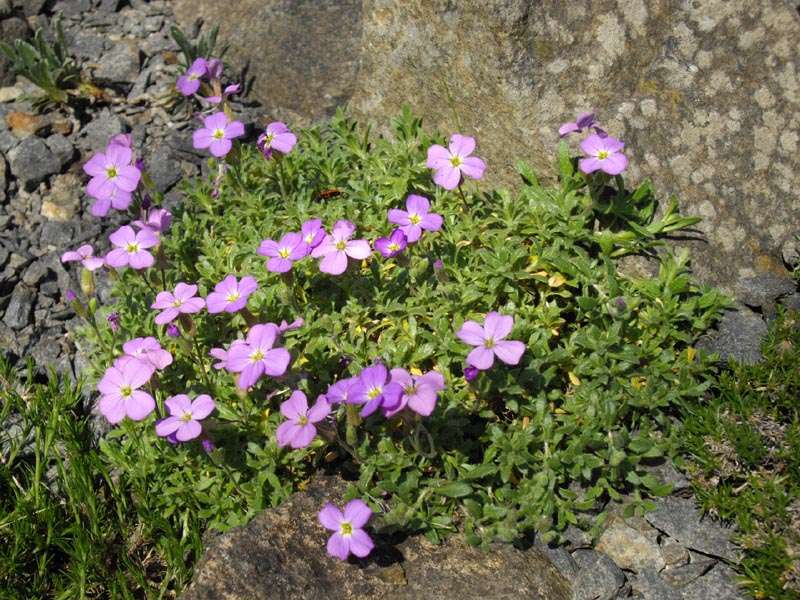
Aubrieta, commonly known as rock cress, is an ideal plant for cascading over rocks in your garden. This perennial forms dense mats of foliage adorned with star-shaped flowers, typically in shades of purple, blue, or pink. Its prolific blooms in spring create a stunning visual display that can creep between stones and fill cracks, making it a low-maintenance ground cover option.
Aubrieta thrives in full sun and well-drained soil, flourishing best in rocky or poor substrates. Its tolerance for drought makes it an excellent candidate for rock gardens, allowing it to thrive where other plants might struggle. Pruning back after flowering encourages healthy new growth and maintains a tidy appearance.
Dwarf Iris
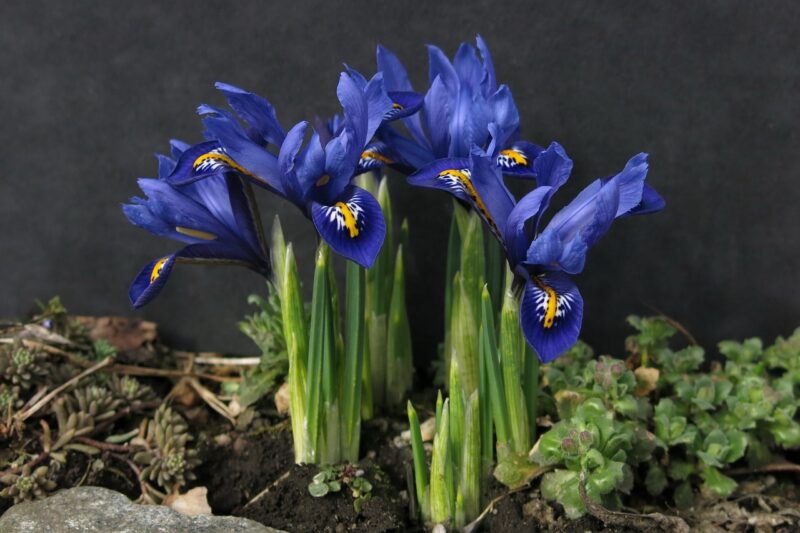
Dwarf irises bring striking color and form to rock gardens. Their compact stature and rich hues make them a standout choice for adding drama among the stones. With varieties that range from deep blues to yellows and whites, these small bearded irises bloom in the spring, drawing attention to their intricate patterns and shapes.
Ideal for sunny locations, dwarf irises prefer well-drained soil, thriving in the gritty conditions often found in rock gardens. They are relatively low-maintenance and have the added benefit of being resistant to deer, making them an excellent choice for areas frequented by wildlife. After blooming, consider deadheading to encourage a neat look in your garden.
Primrose
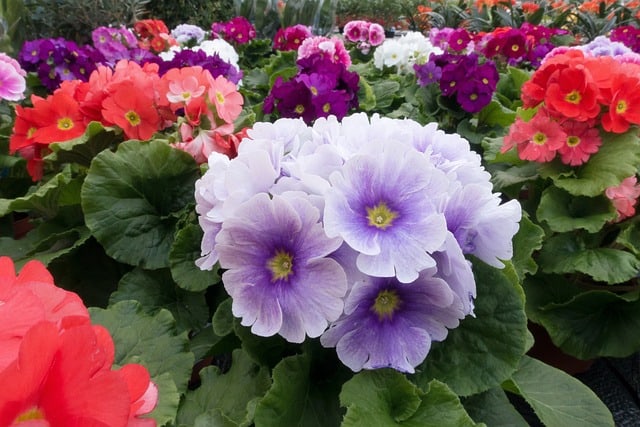
Primroses are charming perennials that are perfect for adding a splash of color to shaded rock garden areas. Their soft, colorful blooms can show themselves in a variety of shades, from pastel pinks to vibrant yellows, providing a cheerful essence that brightens up any nook. These hardy little plants prefer moist, well-drained soil and partial shade, allowing them to thrive in environments that may not be optimal for sun-loving species.
Primroses are particularly popular for their ability to naturalize over time, creating clusters that can beautifully fill a rocky landscape. They are also a crucial source of early nectar for bees, making them a wonderful ally in supporting local pollinator populations. As they self-seed abundantly, you can look forward to a bountiful display year after year.
Rock Cress
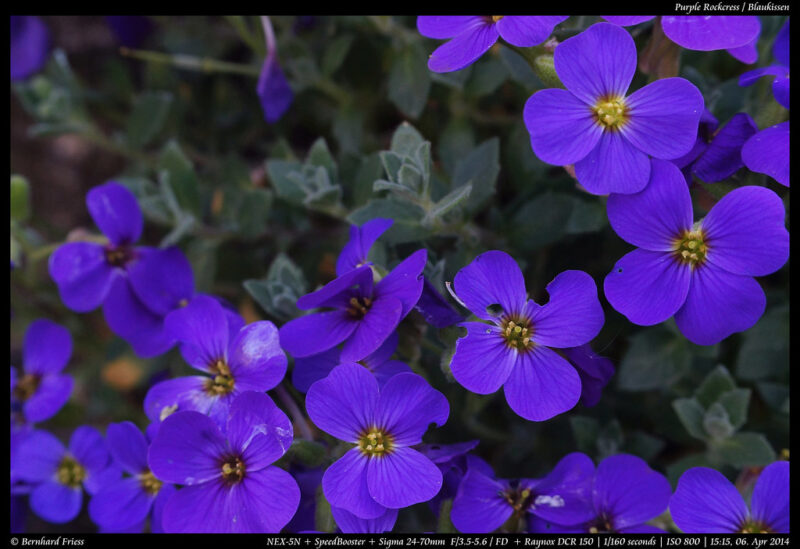
Rock cress, a perennial that thrives in difficult conditions, is aptly named for its preference to grow in rocky, dry habitats. It forms a dense mat of foliage with striking clusters of delicate flowers in spring, predominantly shades of purple. This adaptability to challenging environments makes it a prime candidate for rock gardens, where it can bridge the gap between stones and create harmonious transitions.
Rock cress thrives best in full sun and well-drained soil, needing little care beyond occasional watering during prolonged dry spells. Its low-profile growth habit allows it to coexist with taller plants without losing its presence, making it a versatile addition to your garden.
Heuchera
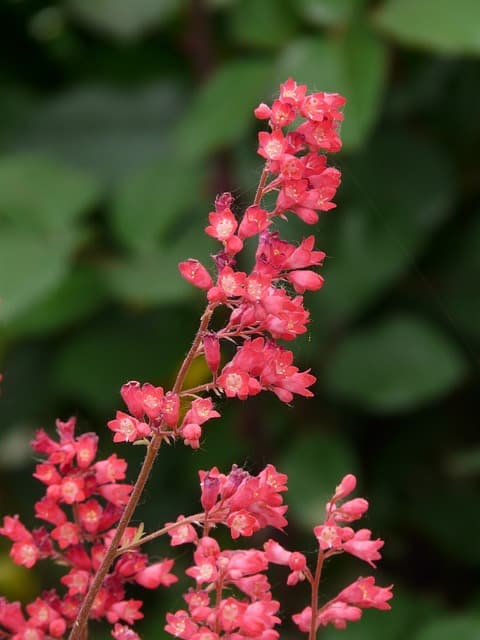
Heuchera, commonly known as coral bells, are particularly valued for their colorful foliage, which varies widely from deep purples to bright reds and variegated patterns. These perennial plants serve as an excellent ground cover and a way to add year-round interest to a rock garden. Their petite stature complements other small plants and allows for a layered garden design that can enhance visual depth.
This adaptable plant prefers partial shade and requires well-drained soil, making it exceptionally suited for rocky environments. Heuchera’s delicate flowers, which emerge on tall stems in spring, attract hummingbirds and other pollinators, adding life and movement to your garden. Their vibrant leaves can create a striking contrast against rocky textures and other foliage, ensuring your rock garden never looks dull.
Lungwort

Lungwort is another wonderful addition to shaded rock gardens, prized for its striking spotted leaves and charming blue or pink flowers. This perennial thrives in moist, well-drained soil, often used to add unique textures and colors to shady spots among rocks and stones. The ability to tolerate low light levels sets lungwort apart from many other rock garden plants.
In addition to its aesthetic qualities, lungwort is renowned for its ability to attract pollinators, making it a valuable ecological addition. Its foliage serves as a beautiful background to other flowering plants, harmonizing the various colors throughout the year. Lungwort can spread well, providing a lovely blanket of greenery that fills in gaps while coexisting peacefully with its neighbors.
Dianthus
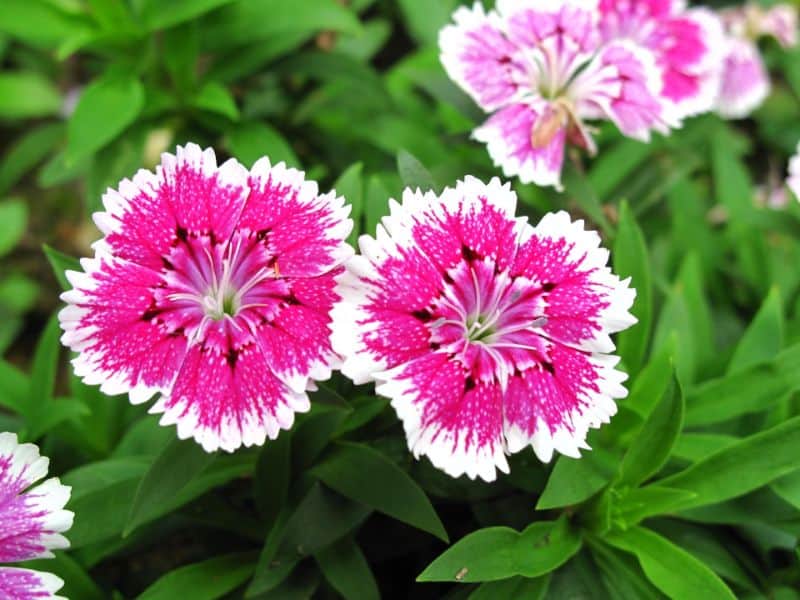
Dianthus, often referred to as pinks, are a delightful group of low-growing perennials that make excellent companions in rock gardens. With their fragrant blooms, typically in pink, white, or red, these charming plants create a colorful display throughout the growing season. Their compact habit and tufted foliage lend itself well to planting in rocky crannies, allowing them to flourish alongside stones.
Enjoying full sun and well-drained soil, dianthus are relatively drought-resistant once established, making them an ideal choice for a rock garden that mimics their native, well-drained habitats. Regular deadheading encourages more blooms, ensuring the garden remains vibrant for as long as possible. The sweet scent of their flowers will enrich your outdoor experience, drawing you closer to your serene garden retreat.
Alpine Forget-Me-Not
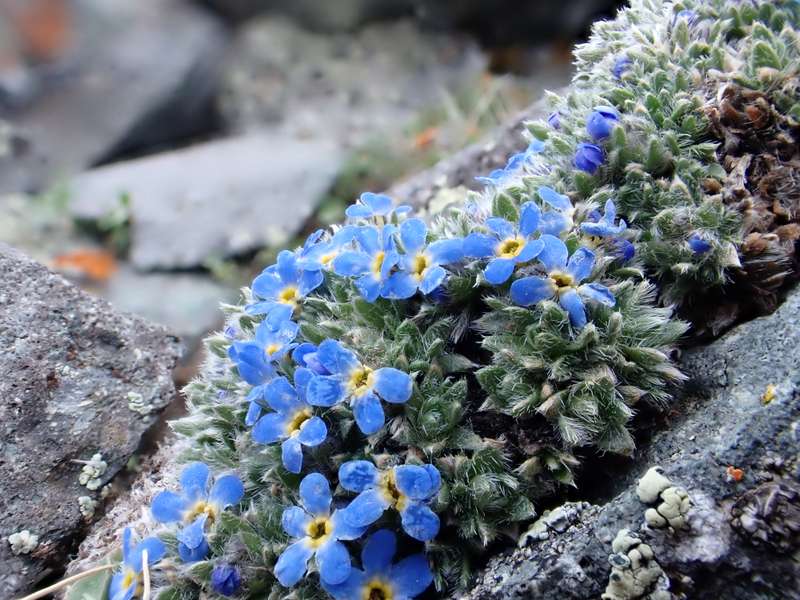
Alpine forget-me-not is a small yet charming perennial that flourishes in rocky gardens. Known for their lovely sky-blue flowers with yellow centers, these plants bloom in late spring and early summer, often adding delicate beauty to rugged surroundings. They thrive in well-drained soils, making them ideally suited for rock gardens that mimic their natural alpine habitats.
Beyond their attractive blooms, forget-me-nots are also known for their sentimental symbolism, representing love and memory. Their compact growth habit allows them to nestle comfortably in crevices or at the foot of larger stones, providing an air of gentility among the stonework. To encourage a lush display, consider planting them in clusters to maximize their seasonal appeal.
Liriope
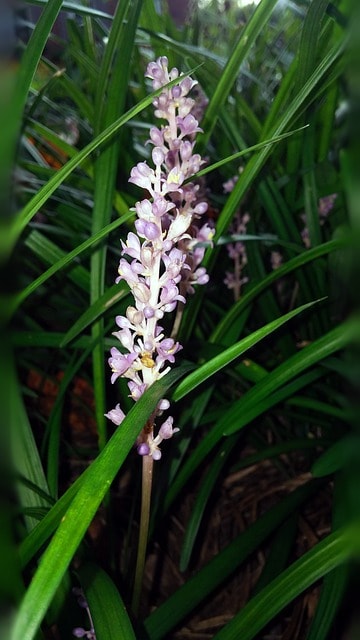
Liriope, commonly known as monkey grass, is a versatile perennial that adapts beautifully to various environments, including rocky gardens. With its grass-like foliage and appealing purple flower spikes, liriope adds a graceful touch to any rock garden. Its adaptability to shades ranging from full sun to full shade makes it particularly valuable for areas with variable light conditions.
This hardy plant is drought-resistant and requires minimal care, thriving in well-drained soil. Whether used as a border, in mass plantings, or tucked into rock crevices, liriope enhances the overall texture and visual interest of the garden. Its glossy leaves create a lush green backdrop for flowering plants, bridging gaps between taller and shorter specimens with ease.
Sea Thrift
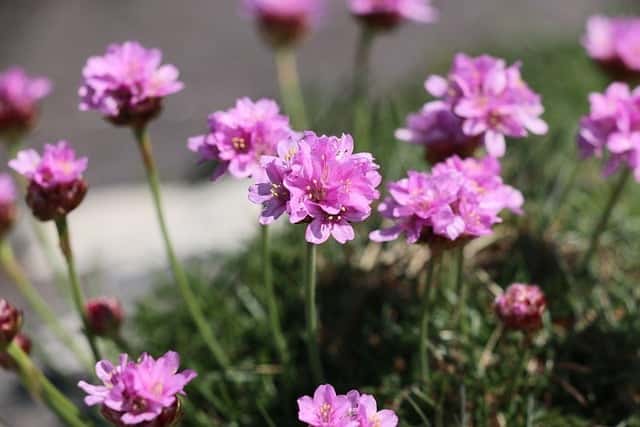
Sea thrift, with its stunning clusters of spherical blooms, is a charming addition to rock gardens. This perennial, also known as Armeria maritima, is known for thriving in sandy, coastal environments, allowing it to seamlessly transition to rocky garden settings. The pink, red, or white flowers are borne atop sturdy stems, offering a whimsical aesthetic that plays beautifully against the ruggedness of stone.
Sea thrift prefers full sun and well-draining soil, making it an ideal choice for exposed areas that receive plenty of light. Once established, they require minimal maintenance, thrive in poor soil conditions, and attract numerous pollinators, ensuring your rock garden remains lively and vibrant. Planting sea thrift in groups creates lush carpets of color that add a cheerful element to your outdoor space.
Hellebore
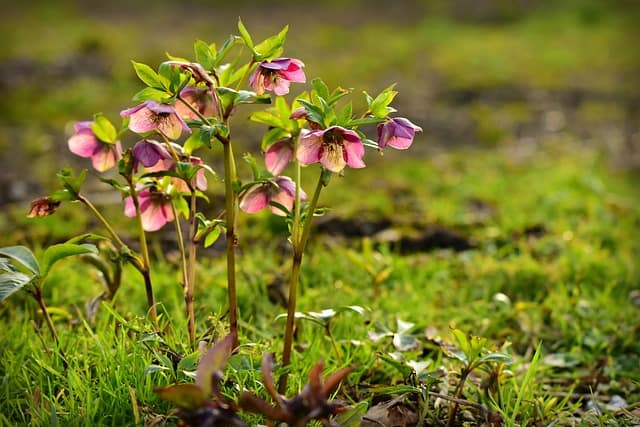
Hellebores are an enchanting group of perennials that are perfect for adding understated elegance to shaded rock gardens. With their unique, cup-shaped flowers that can appear in various colors including purple, white, and green, hellebores provide early blooms in late winter to early spring, offering a much-welcomed display of color when few other plants are flowering.
Ideal for well-drained soil, these plants tolerate both shade and partial sun, making them a valuable addition to gardens where sunlight is limited. Hellebores are also known for their resistance to deer and rabbits, ensuring that their captivating flowers remain untouched. They make an excellent choice for adding a touch of sophistication and intrigue to your rock garden layout.
Bleeding Heart
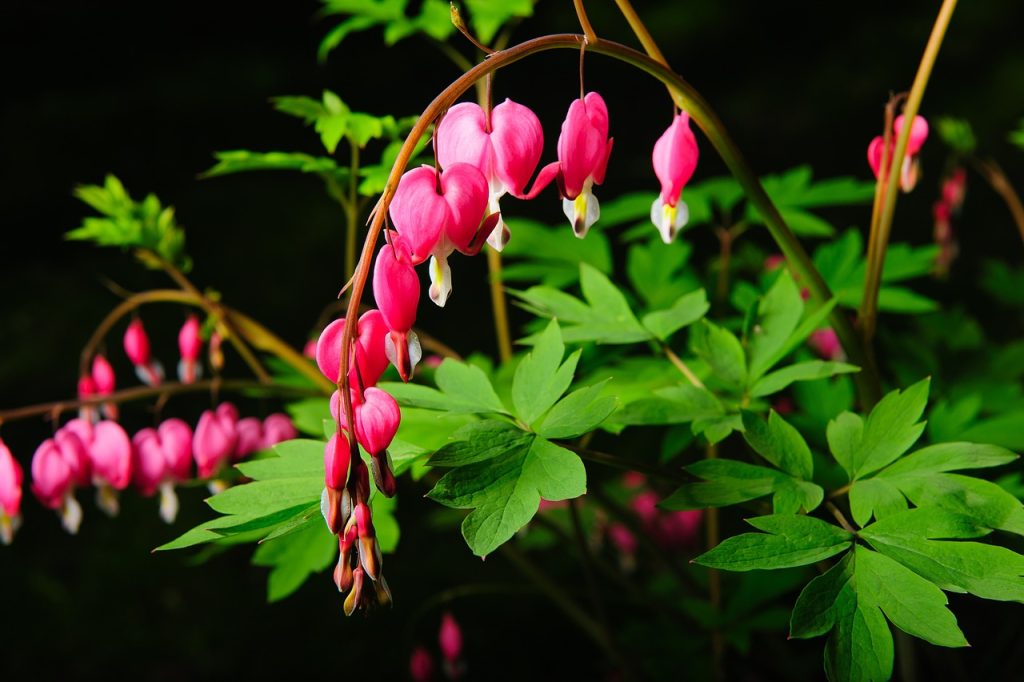
Bleeding heart, with its heart-shaped flowers and delicate stems, brings a romantic flair to the rock garden. Perfect for shaded areas, this perennial produces graceful arching stems lined with beautiful pink or white blooms. These striking flowers can attract hummingbirds and other pollinators, adding life and whimsy to your space.
Bleeding heart prefers well-drained soil and thrives in partial shade, making it well-suited to the intimate niches of rock gardens. This plant goes dormant in summer, so it’s smart to surround it with other perennials that can fill in the gaps left by its absence. Its unique flowers and lush foliage create a soft, airy atmosphere that can soften the hardness of stone, making it a lovely addition to your garden landscape.
Toad Lily
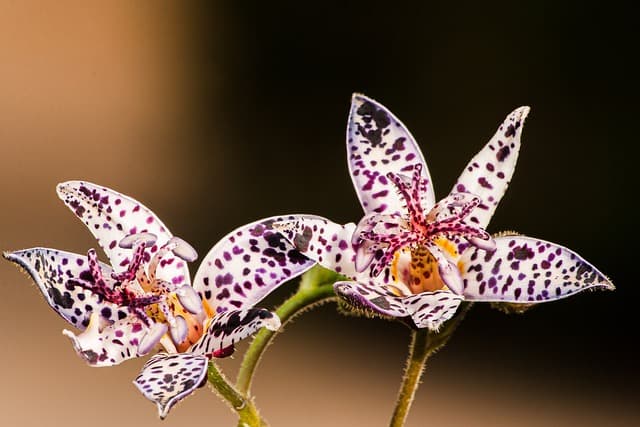
Toad lilies are an exotic and captivating option for rock gardens, offering unique and delicate flowers that bloom in late summer to early autumn. With a sturdy habit and arching foliage, these perennials provide an intriguing layer in the design of your garden. Their speckled flowers in shades of purple and white are particularly eye-catching and serve as a great conversation starter.
While toad lilies flourish in shady conditions and prefer well-drained soil, they are forgiving and well-suited for unique garden formations. Their interesting floral patterns stand out beautifully in the rocky landscape, and their late blooming period allows them to extend the season of visual interest in your garden. These elegant flowers will surely enchant anyone who visits.





